Ghormeh sabzi is a very popular Persian stew of meat and kidney beans cooked in a distinctly aromatic herb and citrus based sauce. Typically served over steamed basmati rice, this is traditionally appreciated as the national dish of Iran.
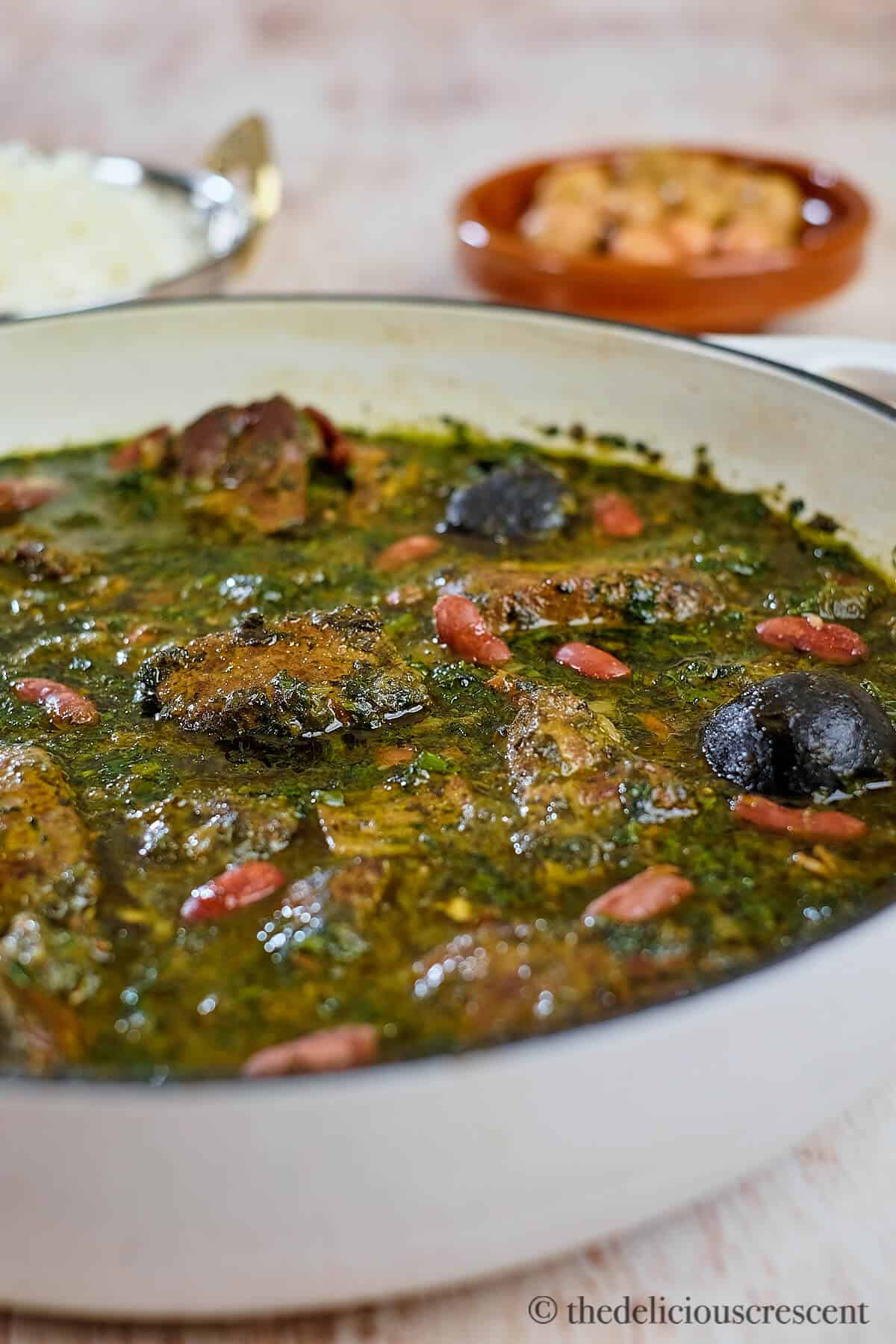
What is Ghormeh Sabzi?
Ghormeh sabzi has achieved the distinction of being one of the most favored Persian stews. Call it the “King of Persian Stews” or the “National dish” – no Persian restaurant menu or buffet is ever complete without this well deserved star item.
There are certain things in life that are to be experienced in its' pristine originality. And ghormeh sabzi is one of them. This classic recipe involves the cooking down of a combination of herbs into a uniquely fragrant mixture.
The three key flavor elements for ghormeh sabzi are: roasting of herbs, fenugreek, dried limes. In Persian, ghormeh means “fried” and sabzi means “herbs”.
Recipe Ingredients
We can make this recipe with easily available ingredients such as meat, herbs, beans, dried limes etc.
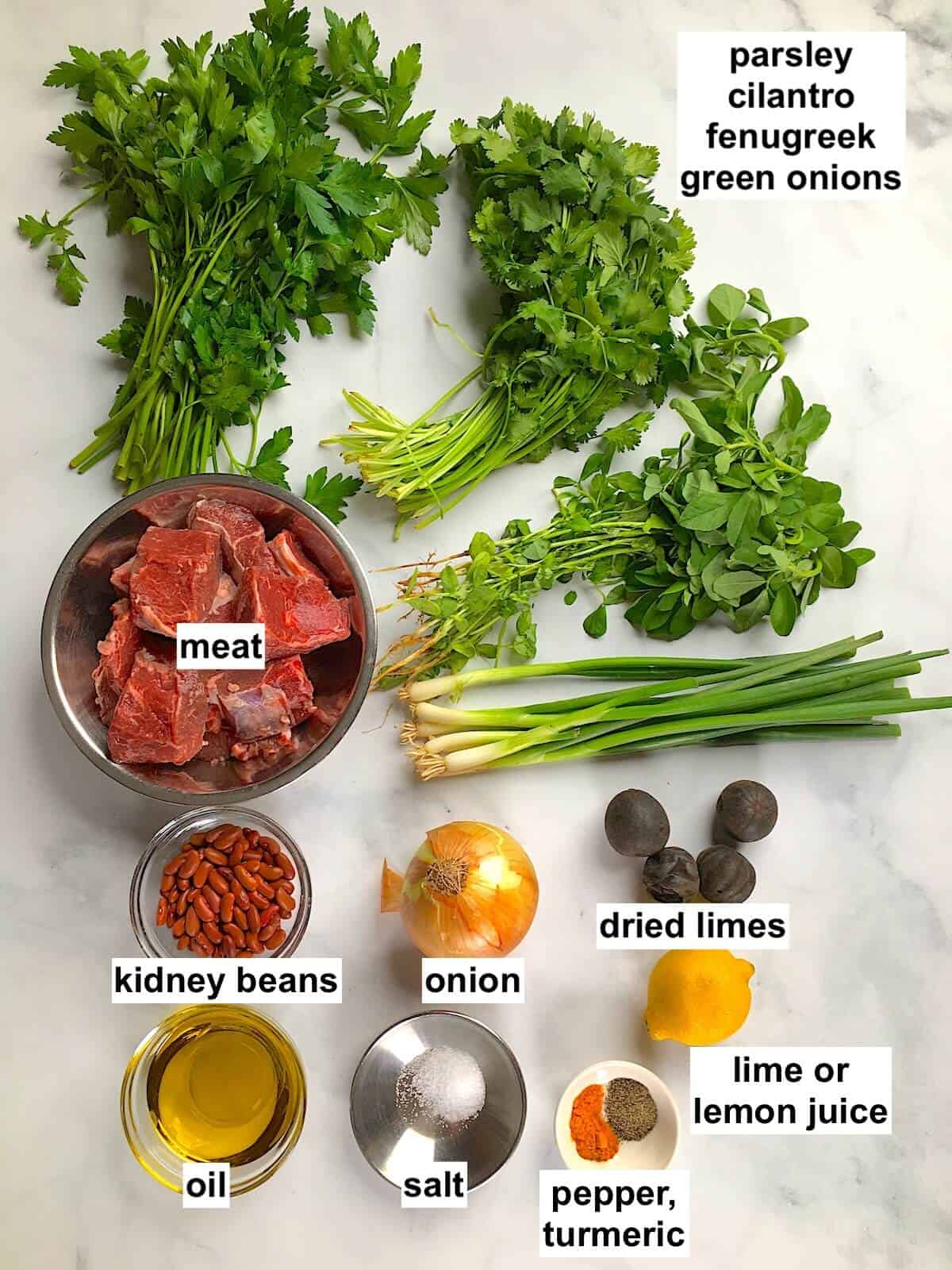
- Meat: traditional choices are lamb, beef or veal. Lamb leg or shoulder with bone works best. Chicken or fish are other options. Add chicken in the last hour, fish in the last 30 minutes, and lower the amount of water to half. Check vegetarian or vegan options below.
- Herbs: It is best to use lots of fresh parsley, cilantro, fenugreek, and green onions. Check below how to make it with dried herbs. Fresh, frozen and dried fenugreek leaves are available at Indian and Middle Eastern stores. Ready-made ghormeh sabzi dried herb mix and dried fenugreek leaves are also available online.
- Beans: Dried red kidney beans are soaked overnight and used. Less common options are pinto beans and black eyed peas. If using canned beans, add them in the last half hour.
- Dried Limes (limoo omani): Dried limes are very important for the taste of ghormeh sabzi and are available at Persian or middle eastern stores and online. You can also dry whole limes or slices in a food dehydrator. Persian dried lime powder or fresh lime juice can also be used.
How To Make Ghormeh Sabzi
- Heat oil and sauté onions. Add meat and brown it a little. Stir in spices. Add drained beans, some salt, water and bring it to a boil. Lower the heat and simmer for half hour.
- Sauté herbs in oil until very fragrant. Add the sautéed herbs and dried limes to the cooking pot.
- Simmer the stew until meat and beans are tender. Add lime powder or lime juice as per taste.
- The stew should be thick and not runny. Adjust the consistency, salt, lime and other seasonings. Serve it hot with steamed rice.
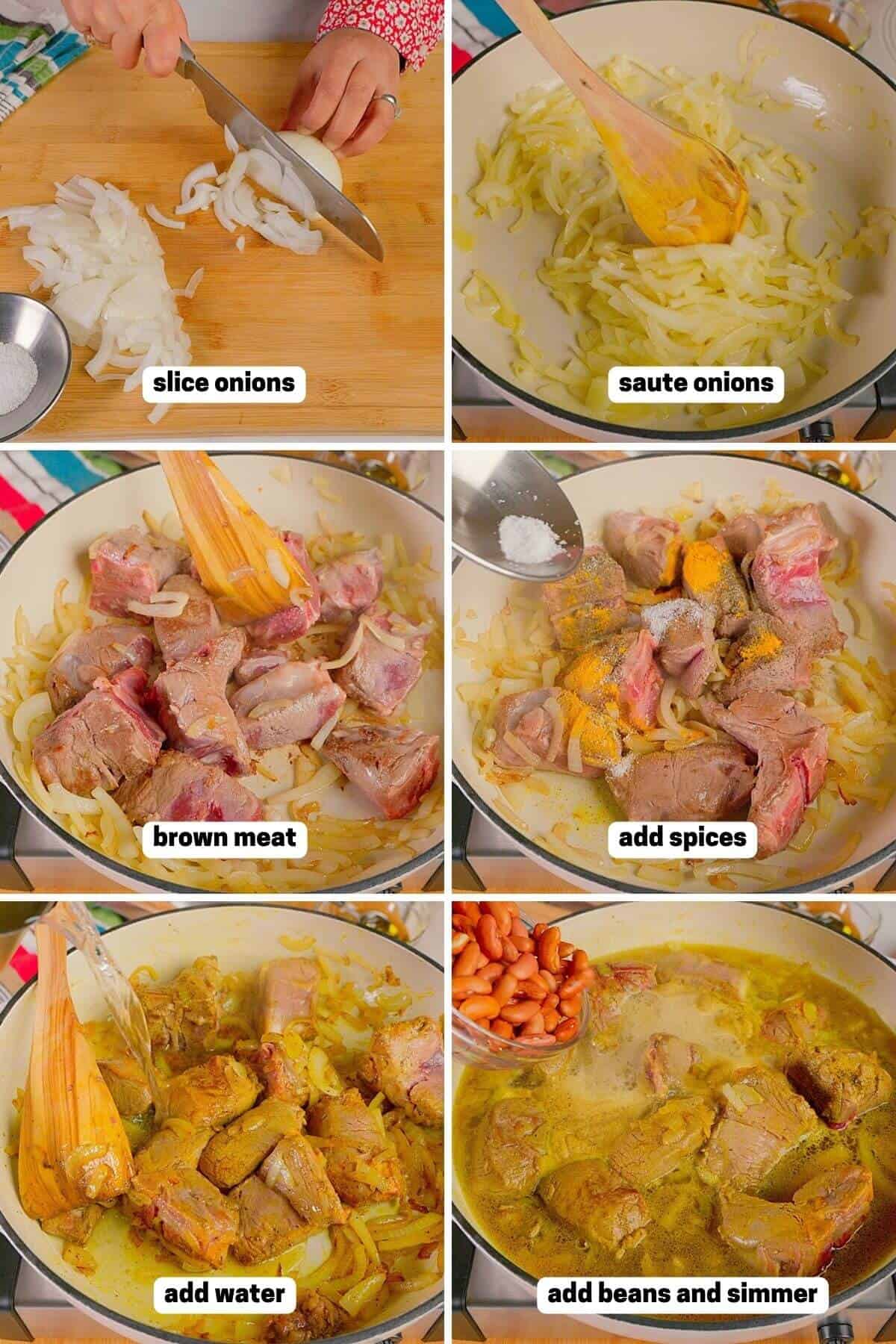
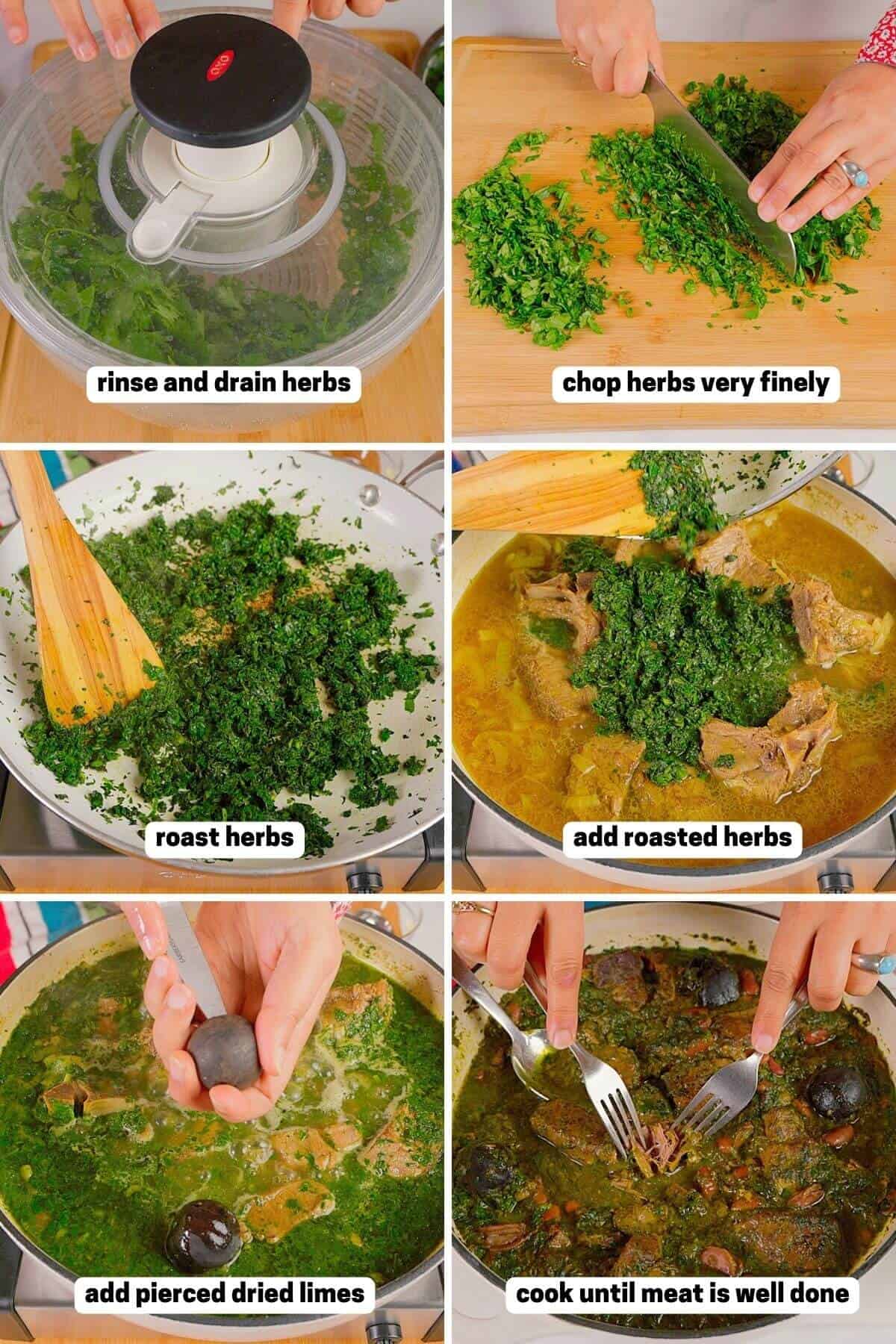
Top Tips
- A key step for making ghormeh sabzi is the slow roasting of herbs, that results in an intense aroma that will fill your kitchen.
- Fenugreek is an essential herb for this stew, and like most recipes that use it, the dish tastes even better the next day. In Persian, Fenugreek is known as Shanbalileh. But it is widely used in Indian cooking, so it is available as fresh, frozen or dried at Indian stores.
- Pierce dried limes and add to the stew, gently releasing the juices and aroma while simmering.
- The stew should be thick and not watery. When herbs simmer for a long time, they disintegrate into a thick stew, sort of like tomatoes.
- Some oil should trickle to the top as a thin layer, as the stew simmers to the final thick consistency.
- For this Iranian khoresht (stew), I personally love to use the red beans with the green herbs. You eat with your eyes too!
What to serve with ghormeh sabzi?
- Serve it with chelow (steamed saffron rice), flatbreads such as lavash, radishes, raw onions and more fresh herbs.
- You can add sides such as shirazi salad.
- Then wash it down with plenty of refreshing doogh for a comforting Persian meal.
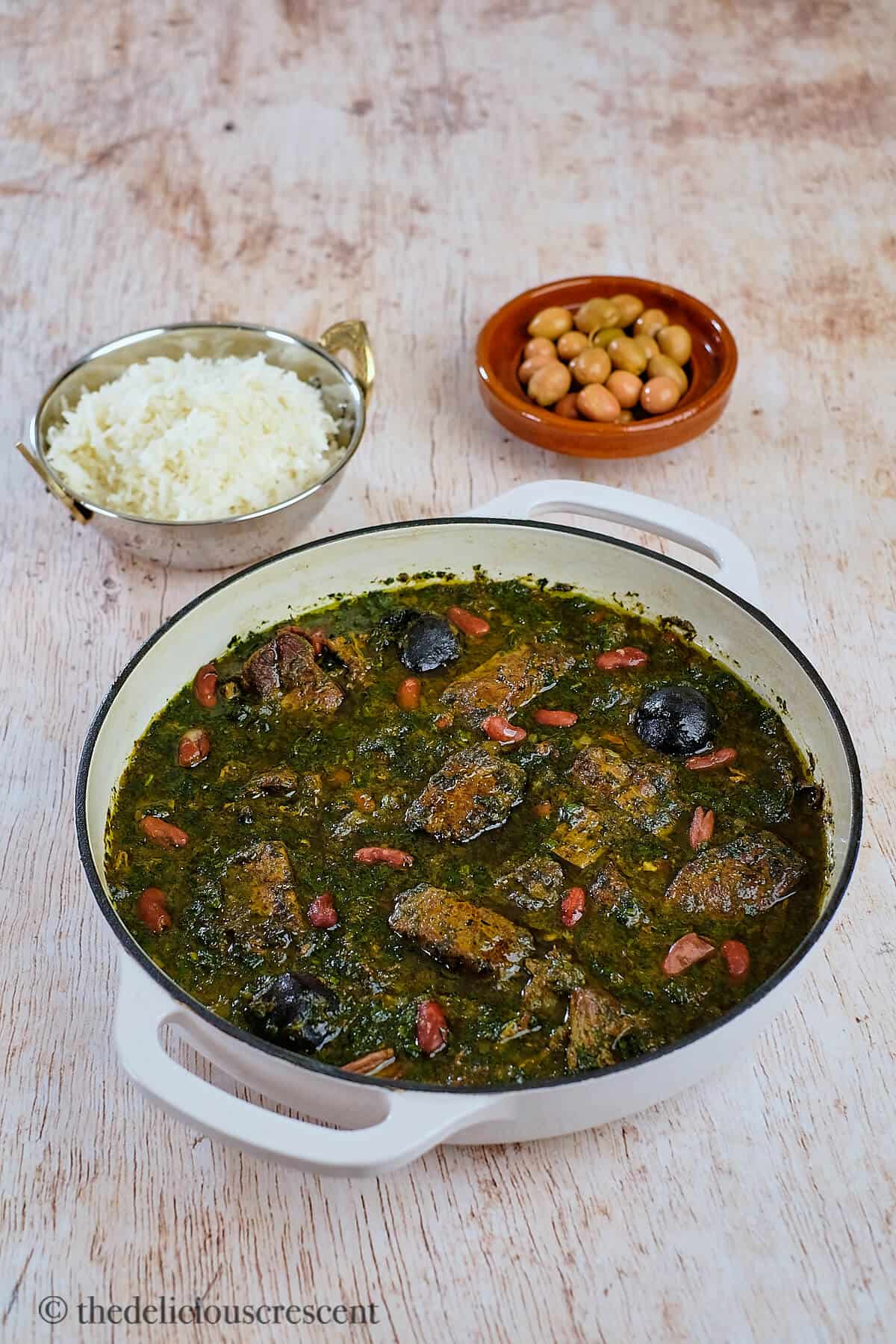
Vegetarian Ghormeh Sabzi
To make it vegetarian or vegan, use thrice the amount of beans to replace the meat. Other substitutes are grilled tofu or sautéed mushrooms. And make sure to lower the amount of cooking water. If using canned beans, add them in the last half hour.
I haven’t tested it, but another idea is to try adding some boiled eggs. Just make couple of slits in the egg white portion and slide them in the last 20 minutes and simmer the stew.
How To Make It in Instant Pot
Use the saute mode to cook the onions, meat and spices. Then add beans, water, salt, bring to a boil and simmer until meat is half done. Add sautéed herbs, dried limes and cook until meat and beans are tender. Finally add lime powder or lime juice, adjust the consistency and seasonings.
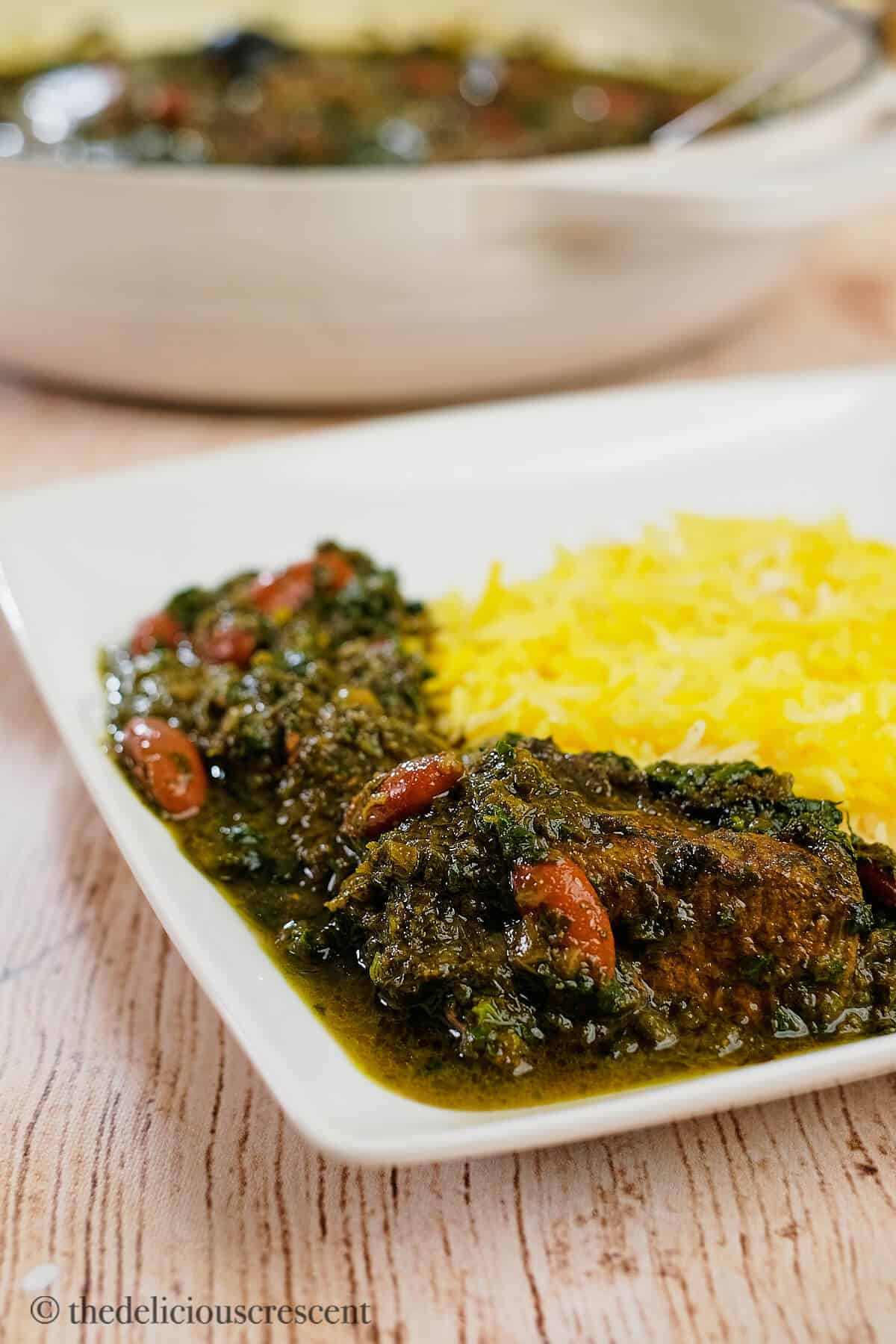
Meal Prep and Storage
Rinse the herbs, spin it through a salad spinner and chop finely. You can also chop herbs in bulk, portion it in ziploc bags and freeze.
Soak kidney beans and cook ahead. You can also portion the stew and freeze for later use.
Refrigerate it for 4 days or freeze for 3 months in freezer-safe containers.
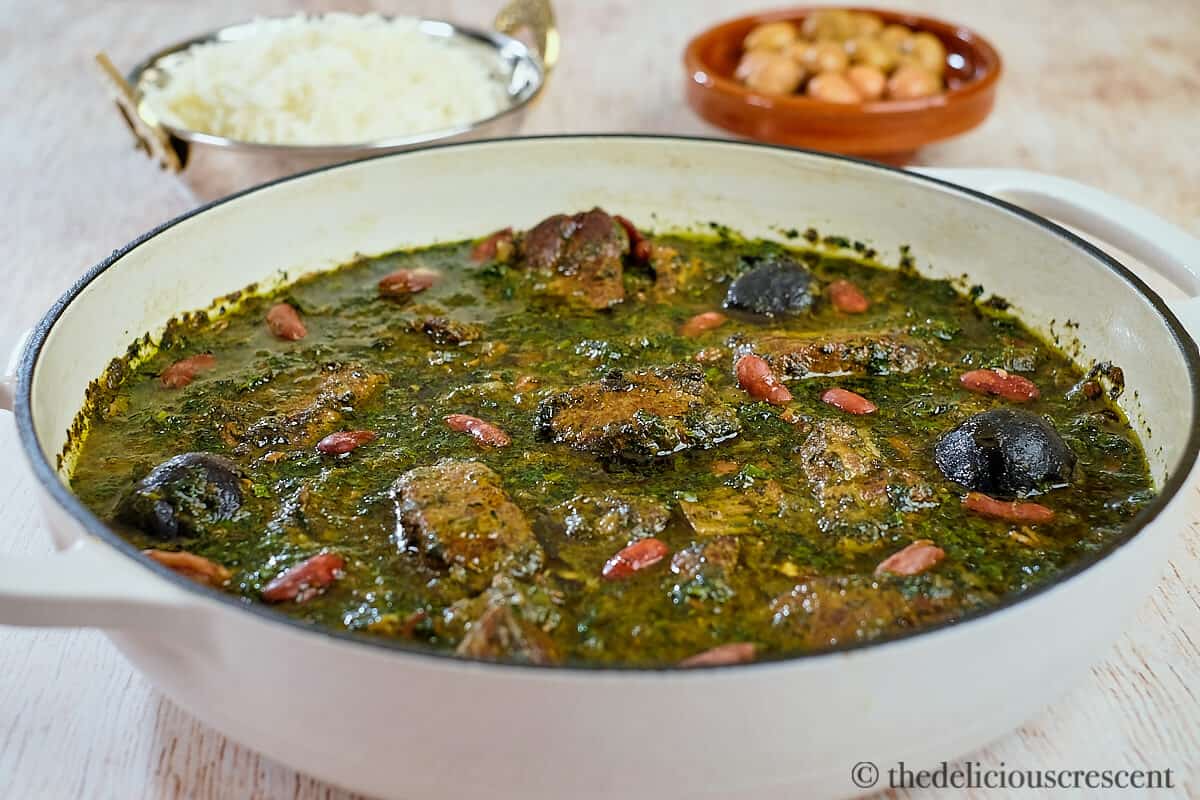
Recipe FAQs
To make ghormeh sabzi recipe with dried herbs, use one-fourth the amount specified for fresh herbs in the recipe. Take the dried herbs in a sieve and immerse in a bowl of lukewarm water. Soak the herbs for 20 minutes, drain and squeeze out the water. Proceed as you would with the fresh herbs.
Ready-made ghormeh sabzi dried herb mix is available online and at Persian or middle eastern grocery stores. If using the dried herb mix, then follow the package instructions.
If the stew is watery, but beans and meat are well done, then separate them out into a plate. Evaporate the herb sauce at high heat until thick and reduced, stirring frequently. Then add the beans and meat back.
If you are not careful, two things that can add bitterness to the stew are fenugreek and dried limes. Don’t use more fenugreek than necessary, especially the dried fenugreek leaves. Add dried limes, lime powder or juice only in the last half of cooking time.
Ghormeh sabzi is a very nutritious stew that is also low carb and gluten free, dairy free, egg free, soy free and nut free. The meat provides high quality protein, B vitamins and some minerals. While beans are great sources of plant protein and soluble fiber.
It is packed with herbs that are rich sources of anti-inflammatory and chemo-preventive phytochemicals. These herbs are also good sources of chlorophyll, which is effective in reversing the carcinogenic effects of heterocyclic amines. And are also a good source of vitamin K, vitamin C and vitamin A.
This stew uses a good amount of oil for roasting the herbs, but it is served with plain steamed rice. Some fat is useful to absorb the abundance of nutrients in this stew. However, you can skim off some oil from the top, once it has been used as a vehicle to cook the stew.
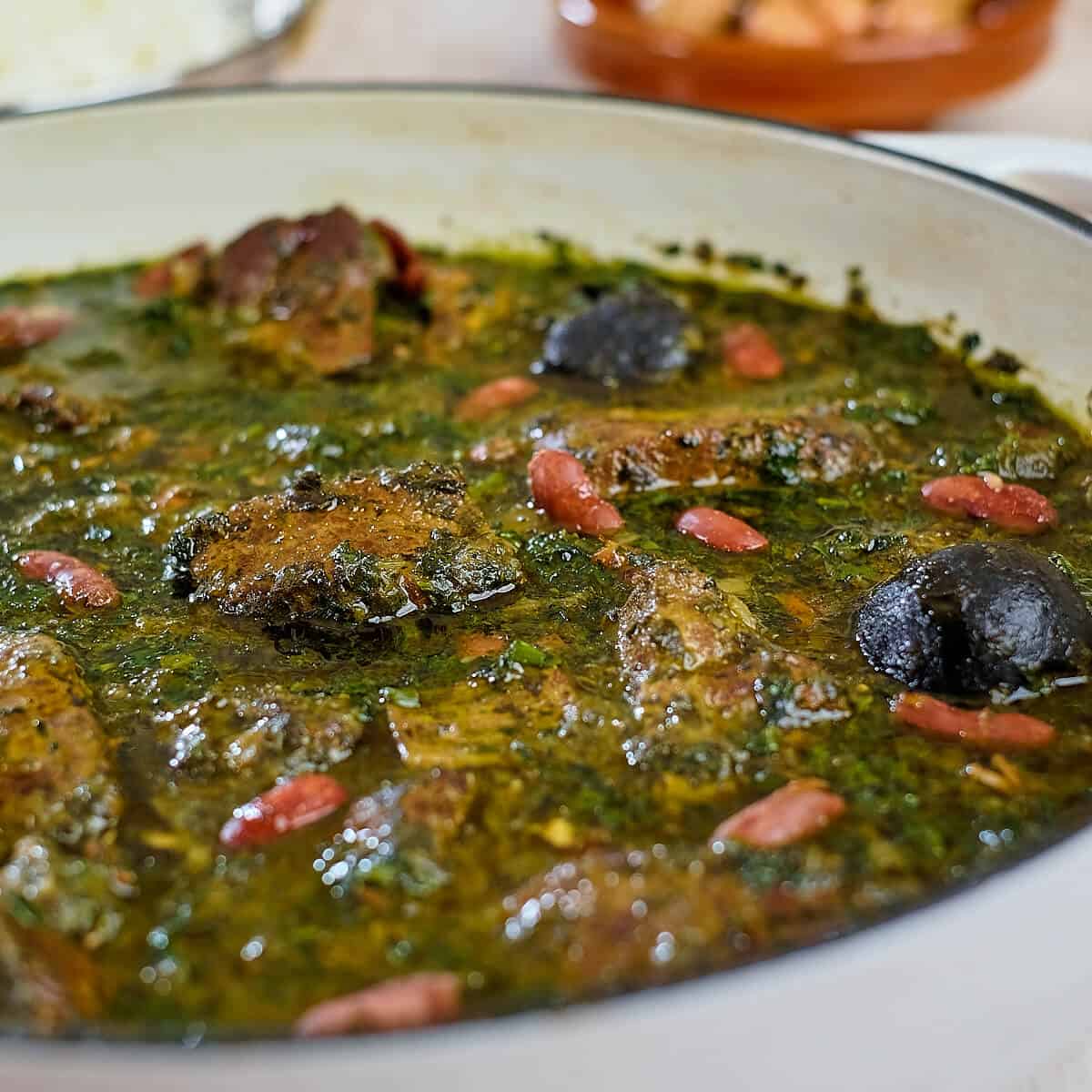
More Stew Recipes
- Moroccan Lamb Stew
- Baghali Ghatogh (Beans and Eggs Stew)
- Persian Zucchini Stew with Chicken (Khoresht Kadoo)
- Easy Bean Stew with Sausage
★ DID YOU MAKE THIS RECIPE? PLEASE COMMENT AND GIVE IT A STAR RATING BELOW!
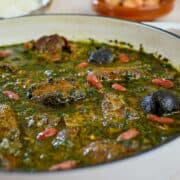
Ghormeh Sabzi Recipe (Persian Herb Stew)
Ingredients
- 4 cups finely chopped parsley stems removed
- 3 cups finely chopped cilantro stems removed
- 1 cup finely chopped green onions green parts
- ¾ cup finely chopped fenugreek leaves or 3 tablespoons dried fenugreek leaves
- 5 to 6 tablespoons avocado oil divided
- 1 large onion yellow, peeled, quartered and thinly sliced
- 1½ lbs lamb with bone, cut in 2 inch pieces, pat dry or 1¼ lbs boneless meat
- 1 teaspoon turmeric
- ½ teaspoon ground black pepper
- salt to taste
- ½ cup dried red kidney beans soaked overnight and drained, or one 15-oz. can kidney beans, rinsed, see note
- 4 whole dried limes pierced
- 1 tablespoon dried lime powder or 2 tablespoons lime juice as per taste
Equipment
- Dutch Oven
- Skillet (Non Stick Recommended)
- Salad Spinner
Instructions
- Rinse the herbs, drain well, spin in a salad spinner or pat dry. Chop herbs very finely.
- Heat 2 tablespoons of oil at medium high in a dutch oven. Add sliced onions and sauté until translucent and edges turn light golden brown.
- Push onions to the edge of pot. Add meat in the center of pot and brown it slightly. Stir in turmeric, black pepper and some salt. Add 3 cups of water and bring it to a boil.
- Lower the heat, add the drained beans and simmer for 30 minutes. Tip: Cook for one hour if using beef. See note below for canned beans.
- Meanwhile, heat 3 tablespoons of oil in a nonstick skillet. Add the chopped herbs and sauté for 20 to 25 minutes, stirring frequently, until you can smell the aroma of roasted herbs.
- Add sautéed herbs to the dutch oven and continue to simmer the stew for 30 minutes.
- Using a paring knife, pierce the dried limes, add to the stew and simmer until the meat falls off the bone and beans are tender, about 30 to 60 minutes. Tip: Adjust cooking time for other meats.
- Add dried lime powder or lime juice in the last half hour, adjusting as per your taste.
- The stew should be thick and not watery. Adjust the consistency, salt, lime and other seasonings.
- Serve the stew hot with steamed rice. It tastes even better the next day!
Notes
- Meat: traditional choices are lamb, beef or veal. Lamb leg or shoulder with bone works best. Chicken or fish are other options. Add chicken in the last hour, fish in the last 30 minutes, and lower the amount of water to half. Check vegetarian or vegan options in blog post.
- Herbs: It is best to use fresh herbs. Check blog post for how to make it with dried herbs. Fresh, frozen and dried fenugreek leaves are available at Indian and Middle Eastern stores. Ready-made ghormeh sabzi dried herb mix and dried fenugreek leaves are also available online.
- Beans: Less common options are pinto beans and black eyed peas. If using canned beans, add them in the last half hour.
- Dried Limes: Available at Persian or middle eastern stores and online. Dried lime powder or fresh lime juice can also be used.
- Don't add more fenugreek than needed, especially the dried leaves. Add dried limes, powder or juice in later half of cooking.
- If the stew is watery but beans and meat are well done, then separate them out and evaporate sauce at a high temperature, stirring frequently. Then add the beans and meat back.
- Meal Prep: Chop the herbs ahead and refrigerate. You can also prep them in bulk, portion it and freeze. Soak beans, cook ahead and freeze for later use.
- Storage: Refrigerate the stew for 4 days or freeze for 3 months in freezer-safe containers.
- Check the blog post for more tips, recipe FAQs, troubleshooting, serving suggestions and variations.
- Nutrition Facts: Not including any added salt.
Nutrition
More Persian Recipes
This post was first published on November 3rd 2016 and has been updated with improvements in recipe, formatting, tips, and additional enhancements.


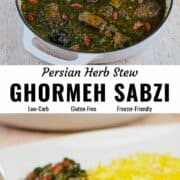
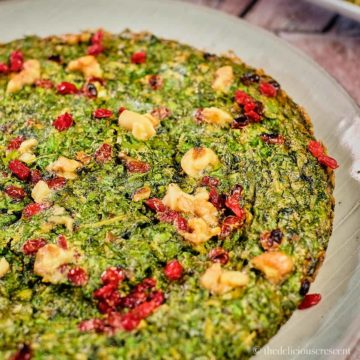
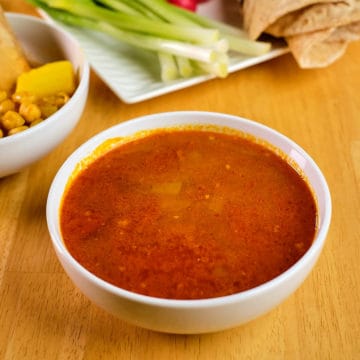
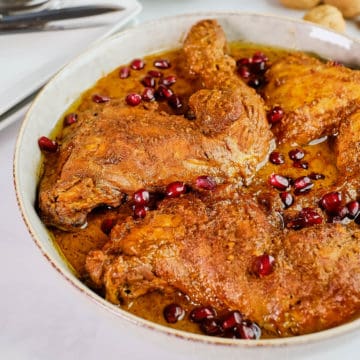
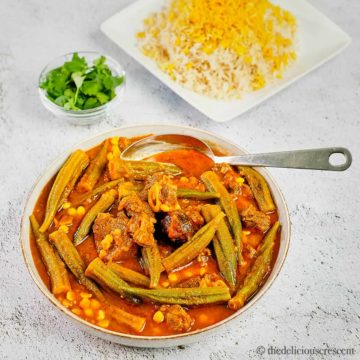
Leave a Comment